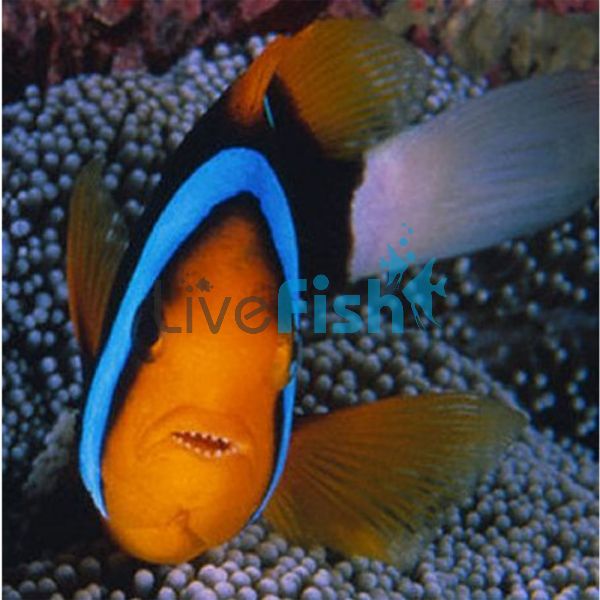Clownfish Blue Lined - Small
The Blue Lined Clownfish is a particularly fascinating species of clownfish. They are nearly indistinguishable from one another and have a variety of colour variations throughout their native habitats.
Clownfish Blue Lined
Two white/light blue bars that transition to a darker blue at the borders are present on the Blue Lined Clownfish's dark brown to nearly black body. Just below the eye, the stripe is the widest, and halfway down the body, it becomes increasingly thin. Depending on the region, the body's main mass can range in hue from dark orange to black. The face, dorsal fin, and pectoral fins of the Blue Lined Clownfish are more orange. The maximum adult size for blue-lined clownfish is approximately 7 inches or 17 cm.
Compared to wild-caught Clownfish, aquacultured Blue Lined Clowns have a significant advantage. For instance, they are already adapted to life in an aquarium as they are born and nurtured in captivity. Additionally, they are significantly less likely to spread disease. Even better, specimens raised in aquaculture can handle the stress of shipping better. Most importantly, buying fish from aquaculture helps to perpetuate our pastime by promoting the culture of marine organisms!
Tank Recommendations for Blue-Lined Clownfish
It is well known that anemones and the Blue Lined Clownfish have symbolic meanings. The clownfish are protected from scavengers by the anemones. This is because anemones have stinging cells called nematocysts. The mucus coats of clownfish shield them from the stings of their hosts. Food is brought in by the clownfish, which also guards the anemone against parasites. The Blue Lined Clownfish is amongst the largest clownfish species, so a tank size of at least 208 litres (55 gals) is recommended. A bigger tank size will result in a more tranquil and prosperous aquarium.
Suitable Tank Buddies
The dominating fish in the Blue Lined Clownfish's tight hierarchy is a female. In the absence of a matriarch, a larger male clown will swap genders and assume leadership. The breeding pair will build an oval-shaped nest for their eggs whenever they are prepared to lay them. The male clownfish keeps watch over the eggs and fans them. The inferior males' commitment to guarding the nest will directly affect the brood's success. This is the main reason clownfish can grow hostile towards other fish in their tank when reproducing. The rest of the time they generally get along with a wide diversity of fish, creating a harmonious aquarium.
Usually Compatible
Popular and happy Clownfish aquarium tank companions include Angelfish, Cardinalfish, Rays, Fancy Damselfish, Goatfish, Hawkfish, Batfish, and Boxfish.
Sometime Compatible
In a large enough tank Blue Lined Clownfish can coexist alongside Pufferfish, Triggerfish, and most Wrasse. They are also some of the few fish that can successfully be housed with Pipefish and Seahorses. For maintaining a tranquil aquarium, a larger tank is always preferred.
Rarely Compatible
You should never keep Scorpionfish, Sharks, Lionfish, or Groupers in the same tank as Clownfish. As all of these fish will want to eat your Clownfish.
Feeding your Blue-Lined Clownfish
Blue Lined Clownfish are omnivors and will eat various meaty and vegetable preparations. Their diet should include live, frozen, and flaked foods. This species feeds on plankton, algae, and, when available, meaty scrapes in the wild. They will happily eat meaty preparations, as well as mysid shrimp, brine shrimp, chopped fish, mussels, and other meaty foods in a home aquarium.
| Scientific Name | Amphiprion chrysopterus |
|---|---|
| Care Level | Easy |
| Common Names | Blue Lined Clownfish |
| Diet | Omnivore |
| Fish Family | Pomacentridae |
| Lifespan (years) | 5 |
| Max. Length (cm) | 17 |
| Min. Tank Volume (l) | 208 |
| Origin | Fiji, Tonga, Marshall Islands, Tahiti |
| Reef Safe | Yes |
| Sociability | Peaceful |
| Venomous | Yes |
| Water Conditions | sg 1.020-1.025, 72-78°F (22ºC-25ºC), dKH 8-12, pH 8.1-8.4 |




